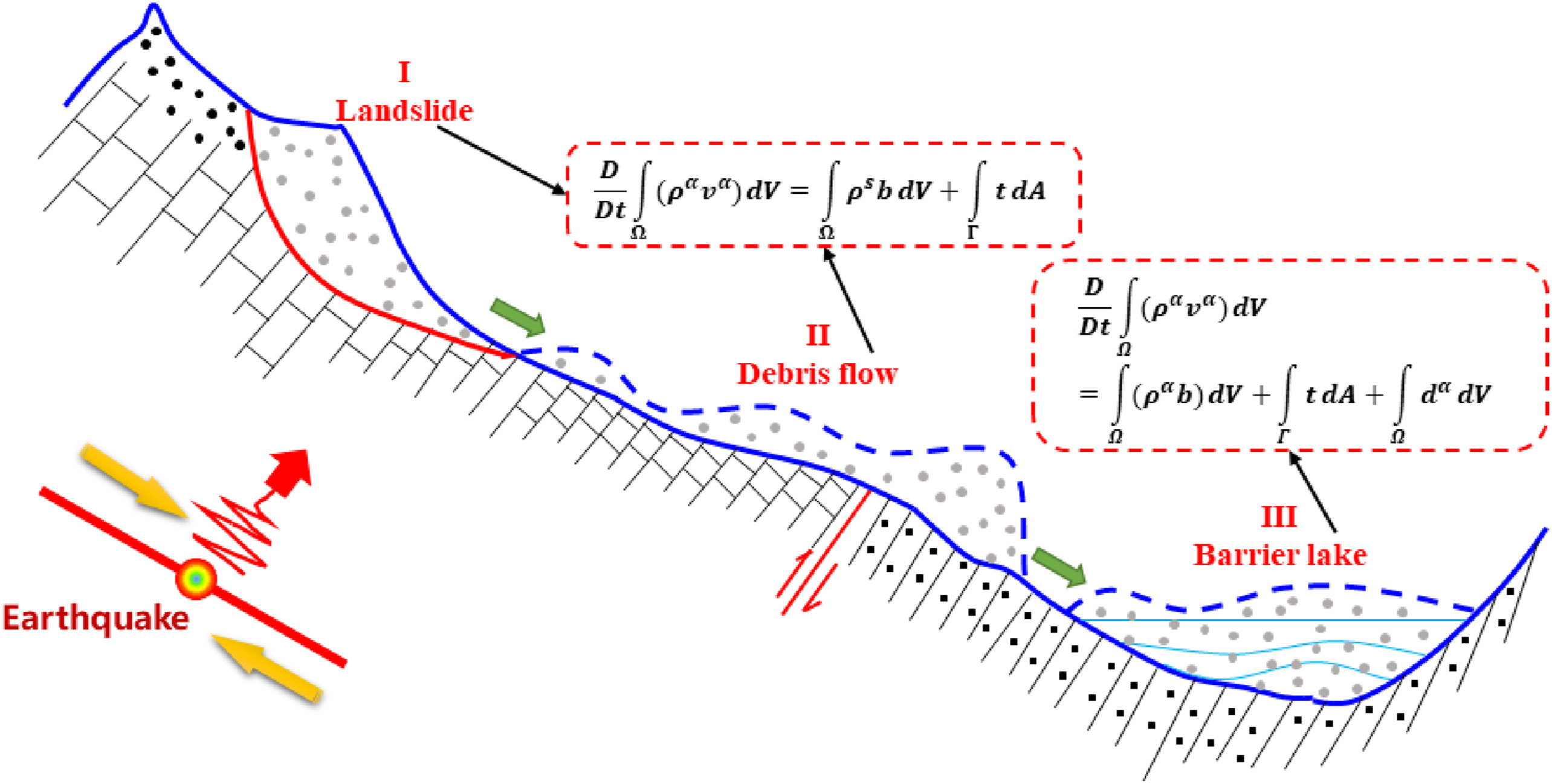JRMGE / Vol 14 / Issue 4
A TPDP-MPM-based approach to understanding the evolution mechanism of landslide-induced disaster chain
Wenjie Du, Qian Sheng, Xiaodong Fu, Jian Chen, Yongqiang Zhou
Show More
a State Key Laboratory of Geomechanics and Geotechnical Engineering, Institute of Rock and Soil Mechanics, Chinese Academy of Sciences, Wuhan, 430071, China
b School of Engineering Science, University of Chinese Academy of Sciences, Beijing, 100049, China
c China-Pakistan Joint Research Center on Earth Sciences, CAS-HEC, Islamabad, Pakistan
2022, 14(4): 1200-1209. doi:10.1016/j.jrmge.2022.03.004
Received: 2021-12-31 / Revised: 2022-03-07 / Accepted: 2022-03-15 / Available online: 2022-04-16
2022, 14(4): 1200-1209.
doi:10.1016/j.jrmge.2022.03.004
Received: 2021-12-31
Revised: 2022-03-07
Accepted: 2022-03-15
Available online: 2022-04-16
With complex topographic and hydrological characteristics, the landslide-induced surge disaster chain readily develops in mountainous and gorge areas, posing a huge challenge for infrastructure construction. This landslide-induced surge disaster chain involves a complex fluid-solid coupling between the landslide mass and a water body and exhibits complex energy conversion and dissipation characteristics, which is challenging to deal with using traditional finite element analysis. In this study, the energy evolution characteristics in the whole process of the disaster chain were first investigated, and the momentum-conservation equations for different stages were established. Then, the two-phase double-point material point method (TPDP-MPM) was used to model the landslide-induced surge disaster chain, and an experiment involving block-induced surge was modeled and simulated to validate this method. Finally, three generalized models were established for the landslide-induced surge process in a U-shaped valley, including subaerial, partly submerged, and submarine scenarios. The interaction mechanism between the landslide mass and the water body in the disaster chain was revealed by defining the system energy conversion ratio and the mechanism of evolution of the disaster chain from the perspective of energy. The results help further evaluate the secondary disasters, given the submerged position of the landslide mass.
Keywords: Disaster chain, Landslide-induced surge, Material point method (MPM), Energy evolution, U-shaped valley
Article Data
Author(s) Information
Xiaodong Fu

Xiaodong Fu obtained his BSc degree in Sichuan University, China, in 2009, and his PhD in University of Chinese Academy of Sciences, China, in 2014. He is an associate researcher at the Institute of Rock and Soil Mechanics, Chinese Academy of Sciences (CAS), and was selected as a member of the 4th Young Elite Scientist Sponsorship Program by China Association for Science and Technology (CAST) and Youth Innovation Promotion Association of CAS. He is the deputy secretary general of Surface Rock Engineering Committee of Chinese Society for Rock Mechanics and Engineering. His research interests focus on the whole process simulation method of geotechnical engineering disaster, mechanism of landslide instability, and engineering disaster risk assessment and safety protection technology.

